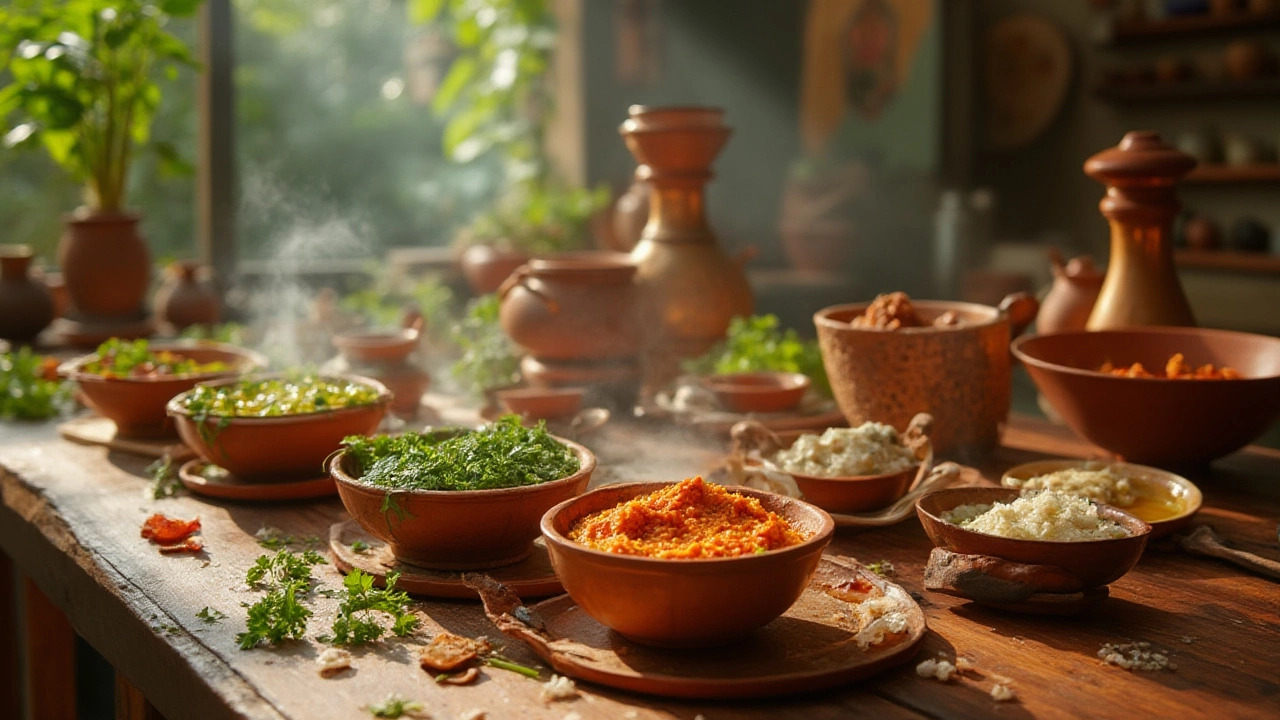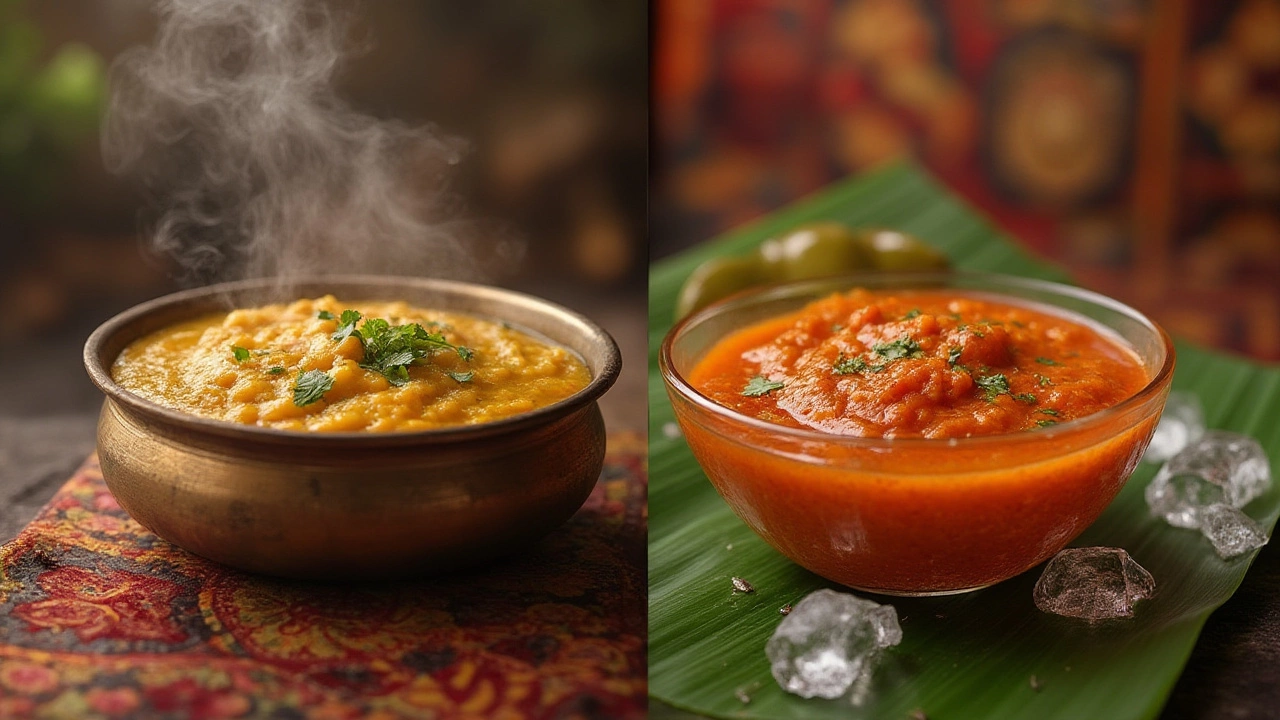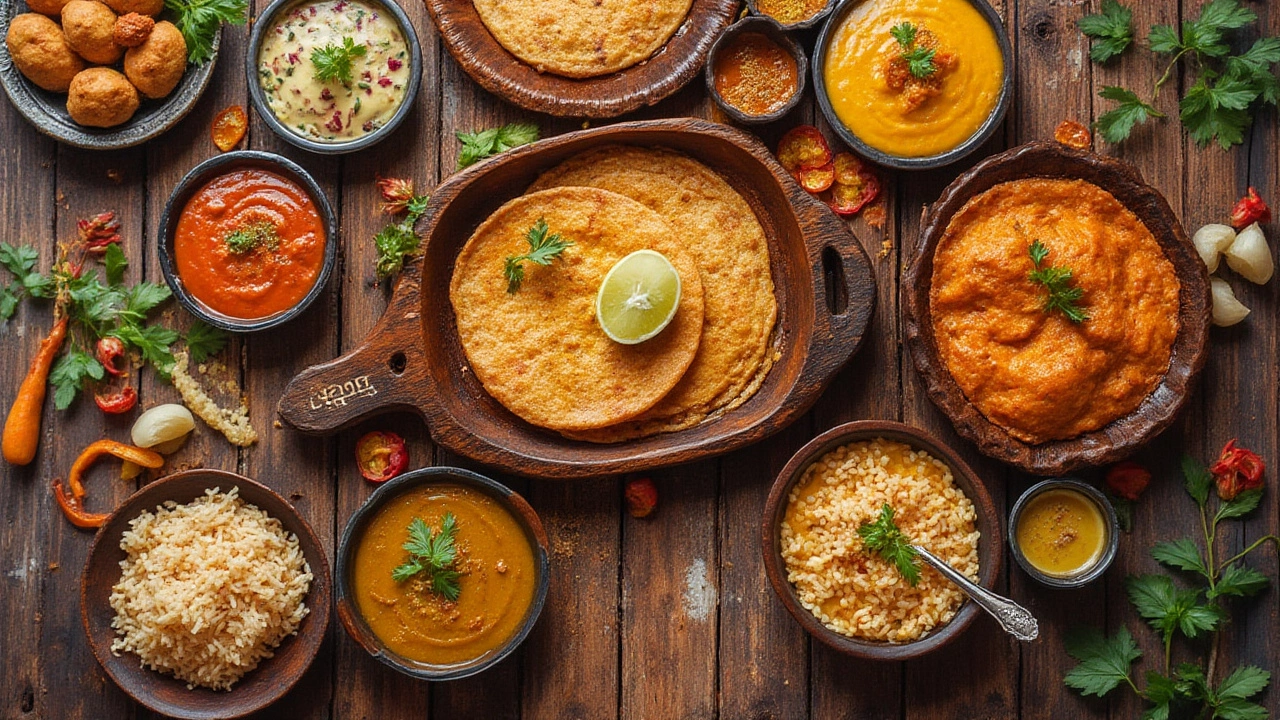Should Chutney Be Served Hot or Cold? Indian Cuisine Secrets Revealed
 Jul, 17 2025
Jul, 17 2025
You might think chutney is just a jar tucked back in your fridge, but the way you serve it might just surprise you. That cheeky scoop next to your samosa or the dollop slathered on your paratha isn’t as simple as it appears. Turns out, whether you eat chutney hot or cold isn’t some throwaway detail. There’s history, personal taste, and even a bit of science hiding in that debate. It’s the kind of question that has families in Hyderabad, Mumbai, and Delhi tossing their opinions around at dinner tables. Be honest—are you eating your chutney right?
Why Temperature Matters: The Science and Tradition Behind Chutney
Chutney comes in hundreds of varieties—mint, coriander, tamarind, coconut, tomato, mango. Walk through someone’s kitchen in India, and you’ll notice at least a couple chill in the fridge, while others sit on the stove, bubbling gently. This isn’t random. The temperature of chutney changes its taste, aroma, and even its effect on your mouth. Texture, for example: a fresh coconut chutney straight out of the fridge can feel almost creamy, while warmed, it loosens up and coats your tongue with more warmth than flavor. If you’ve ever compared a cold green chutney with one heated up, you probably noticed the flavor changes. Cold chutneys pop with brightness; they’re sharp and zesty. Heating a coriander chutney, though, tones down that green bite and brings out subtle earthy notes that you might have missed before.
Spices make a difference too. For something like tomato chutney with mustard seeds, a gentle reheat can amp up its flavor profile. Mustard seeds release different aroma compounds when warmed, making the whole thing taste deeper and sometimes even sweeter. South Indian homes regularly serve their coconut chutneys at room temperature, which preserves the delicate flavor without making it go stodgy or oily. Cold coconut chutney develops a bit of a waxy feel and can even dull its natural sweetness. Look at northern-style tamarind chutney: chilled, it tastes tangy and sweet—great for cooling down a plate of spicy chaat. Warm it up and it turns richer, almost like a sauce you could pour over pakoras or use as a base for another dish.
This whole hot-versus-cold divide also follows tradition. North Indians are way more likely to keep their chutneys cold, especially the sweet-and-sour fruit ones. In the south, fresh chutneys get made right before eating, at room temperature or even warm from the grinding stone. If you go further east, to Bengal, kashundi (mustard chutney) is strictly never heated and always room temp. Families guard these habits—sometimes stubbornly. But tastes are changing: a 2023 survey by Food Talk India found that 38% of urban families now refrigerate all their chutneys for convenience, even if grandma insists otherwise. The verdict? There’s no gospel rule—temperature is as much about habit as it is about science.
| Chutney Type | Best Served | Main Effect of Temperature |
|---|---|---|
| Mango Chutney | Cold | Retains tanginess and freshness |
| Tamarind Chutney | Cold | Heightens sweet-tangy punch |
| Mint/Coriander Chutney | Cold or Room Temp | Brighter flavor, zesty aroma |
| Coconut Chutney | Room Temp | Balances texture and sweetness |
| Tomato Chutney | Warm | Sweeter, richer, deeper flavor |

Popular Chutneys and How Temperature Changes the Game
No two chutneys are the same, and the temperature question makes that even more interesting. Let’s talk green chutney first—the famous mint and coriander blend. If you swipe it cold onto a samosa, the freshness is what stands out. The flavors seem to leap forward, making it feel crisp and almost citrusy even if there’s no lime. Now try the same with your paneer tikka, but bring the chutney to room temp. It melds better, losing some sharpness but hugging the food more closely. People in Gujarat have actually been reheating green chutney just a tad and pouring it over hot dhokla to soak in flavor without clashing cool against warm. Little things like that flip the experience.
Tamarind chutney is another crowd-pleaser. You almost always see it cold with street snacks—pani puri or bhel puri. Cold tamarind chutney balances the heat of fried snacks and keeps things lively. Warm it up, though, and the sweetness deepens, the tart edges smooth out, and suddenly it’s not just a dip but a drizzle-worthy sauce for sabudana vada or dahi bhalla. Down south, you’ll spot ladies in Mysore serving coconut chutney room temperature, never cold, to keep the taste fresh—but also because coconut hardens in the fridge, losing its pleasant mouthfeel. So, room temperature or freshly made is always their choice.
Pickle chutneys, like the fiery garlic or red chilli ones in Andhra Pradesh, are often eaten warm, sometimes straight off the stove. Warming brings all the aromatics to the surface, intensifies spiciness, and makes the oil glisten. On the flip side, sweet chutneys like mango or pineapple are kept cold on purpose. Ever noticed their flavor pops more when chilled? Cold preserves the fresh, fruity notes, making each spoonful taste vibrant. Some places chill onion chutney right before serving, just to mellow the sulfur and bring out the sweetness. Every region’s got its quirks, and experimenting with temperature is part of the fun.

How to Serve Chutney: Tips for Perfect Pairings and Ultimate Flavor
So you’re standing there, about to scoop chutney onto your plate—how do you know if you should heat it up or serve it cold? Start by matching the chutney’s temperature to the food. Hot foods love a cold contrast: think hot samosas with cold mint chutney, or fresh dosas with room-temp coconut chutney. If you’re serving chutney as a sauce over grilled meats or paneer, warming it up can thicken it, make it glossy, and help coat the food better. Try gentle heating—not boiling or microwaving on high—which keeps flavors intact. For fruit and tamarind chutneys, keep them cool—they’ll cut Grease and balance out heavy, spicy reds.
Make-ahead tip? If you’re prepping chutney for a party, whip it up the day before and store most varieties in the fridge. Just remember to pull out any coconut-based chutney or ones thickened with dal or peanuts about 30 minutes before serving, so the texture softens. Unlike wine, chutney doesn’t get better the longer it sits out—coriander can turn bitter, as can mint. A trick for oversharp or too-cold chutney? Mix in a spoonful of yogurt for creamy texture and mellow flavor, or a pinch of jaggery to wake up tired taste buds. For those fiery Andhra or Chettinad-style chutneys, serving warm isn’t just tradition—it can help release some of that shouty spice, giving you more flavor, less pain.
Don’t ignore presentation. Chutney splashed over a plate of pakoras looks more appealing when it’s thick and pourable. For dips and dollops, aim for a chilled chutney with a spoonable consistency. Want toast or a sandwich to sing? Room-temperature chutney spreads smoothly, without dragging. For storing, keep chutney in glass jars—plastic can pick up odors and stain. And for next-level freshness, always use a clean, dry spoon, especially with coconut or coriander blends, which spoil fast when contaminated. In restaurants, most chutneys are served cold for safety and shelf-life, but at home, you can play around to find what strikes the perfect chord for you.
To wrap it up, there’s no law laying down whether you eat chutney hot or cold. Just taste, test, and have some fun with it. Trust your tongue and the mood of the meal—not some ancient tradition or food police. That’s the secret every Indian kitchen knows, but few ever say out loud.